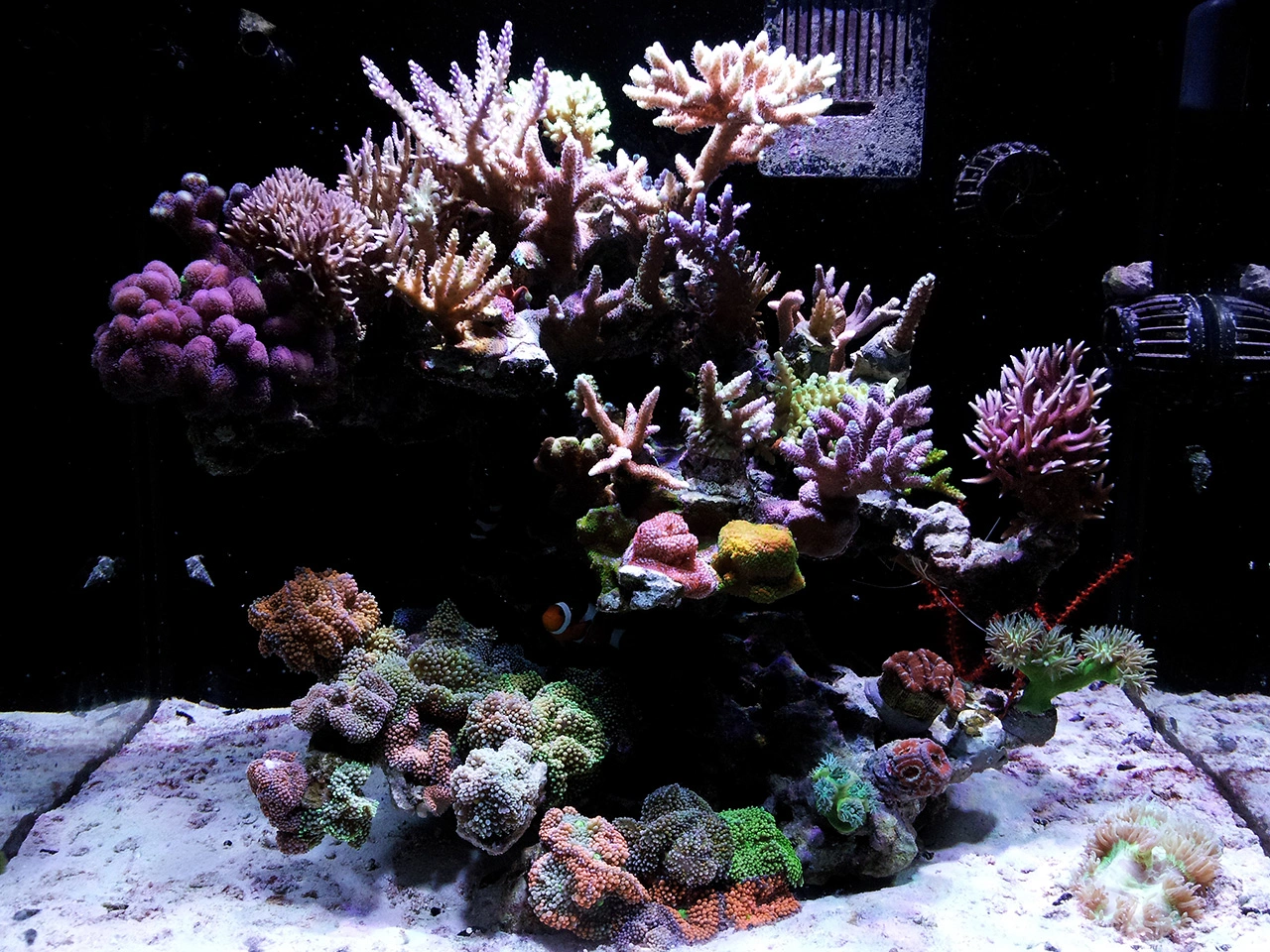Stunning 34-Gallon Reef Tank – Spirofucci's TOTM | NanoReef

Tank Specifications
Volume: 34 Gallons / 128 Liters
Dimensions (L × W × H):
30.0" ×
13.5" ×
16.8"
76.2cm ×
34.3cm ×
42.5cm
Equipment List
- Salt: Red Sea
Frequently Asked Questions
How do I create a custom aquascape for my reef tank?
Start by selecting dry rock that suits your desired look. Use a hammer to break larger pieces if necessary and combine them with rock putty or glue for stability. Incorporate support rods for taller structures, ensuring they can hold the weight of the rock. Inspiration can come from observing natural styles, like bonsai.
What type of lighting is best for a nano reef tank?
LED lighting is recommended for its energy efficiency, full spectrum, low heat output, and programmability. Brands like Ecotech provide excellent quality and customer service.
How often should I perform water changes for my reef tank?
It is recommended to perform water changes of about 10% weekly to maintain water quality and nutrient levels.
What should my water parameters be for a healthy reef tank?
Aim for a salinity of 1.025, pH around 8.1-8.4, ammonia and nitrite at 0, nitrate below 5, calcium levels at 400-450 ppm, magnesium at 1250-1350 ppm, and phosphate below 0.03 ppm.
How do I set up an automatic dosing system for my tank?
To set up an automatic dosing system, choose a reliable doser, configure it to dose the appropriate amount of two-part solutions like B-Ionic for calcium and alkalinity, and ensure it’s programmed to dispense at regular intervals to maintain consistent levels.
What fish species are suitable for a 34-gallon nano reef tank?
In a 34-gallon nano reef, species such as Ocellaris Clownfish, Midas Blenny, and Sixline Wrasse are suitable due to their size and compatibility with reef settings.
How do I safely introduce new fish to my tank?
Quarantine new fish for at least 2-4 weeks to prevent disease in your main tank. Gradually acclimate them by slowly adding tank water to the bag over an hour before introducing them to the aquarium.
What invertebrates can I maintain in a reef tank?
Suitable invertebrates include various snails (like Nassarius and Turbo), hermit crabs, cleaner shrimp, and starfish, which contribute to the tank's cleanliness and biodiversity.
What is the purpose of a skimmer and how do I choose one?
A skimmer removes organic waste from the water before it breaks down, thus maintaining better water quality. Choose one based on your tank size and ensure it fits your filtration setup, such as a Lifereef skimmer for a nano reef.
How can I improve circulation in my reef tank?
Use powerheads or wavemakers, like the Ecotech MP10, to create random flow patterns that mimic the ocean currents. Position them to eliminate dead spots and ensure all areas of the tank are well-circulated.
Why is RODI water important for my reef tank?
RODI (Reverse Osmosis Deionization) water is crucial because it removes impurities and contaminants that could harm marine life. Always use RODI water when mixing saltwater or performing water changes.